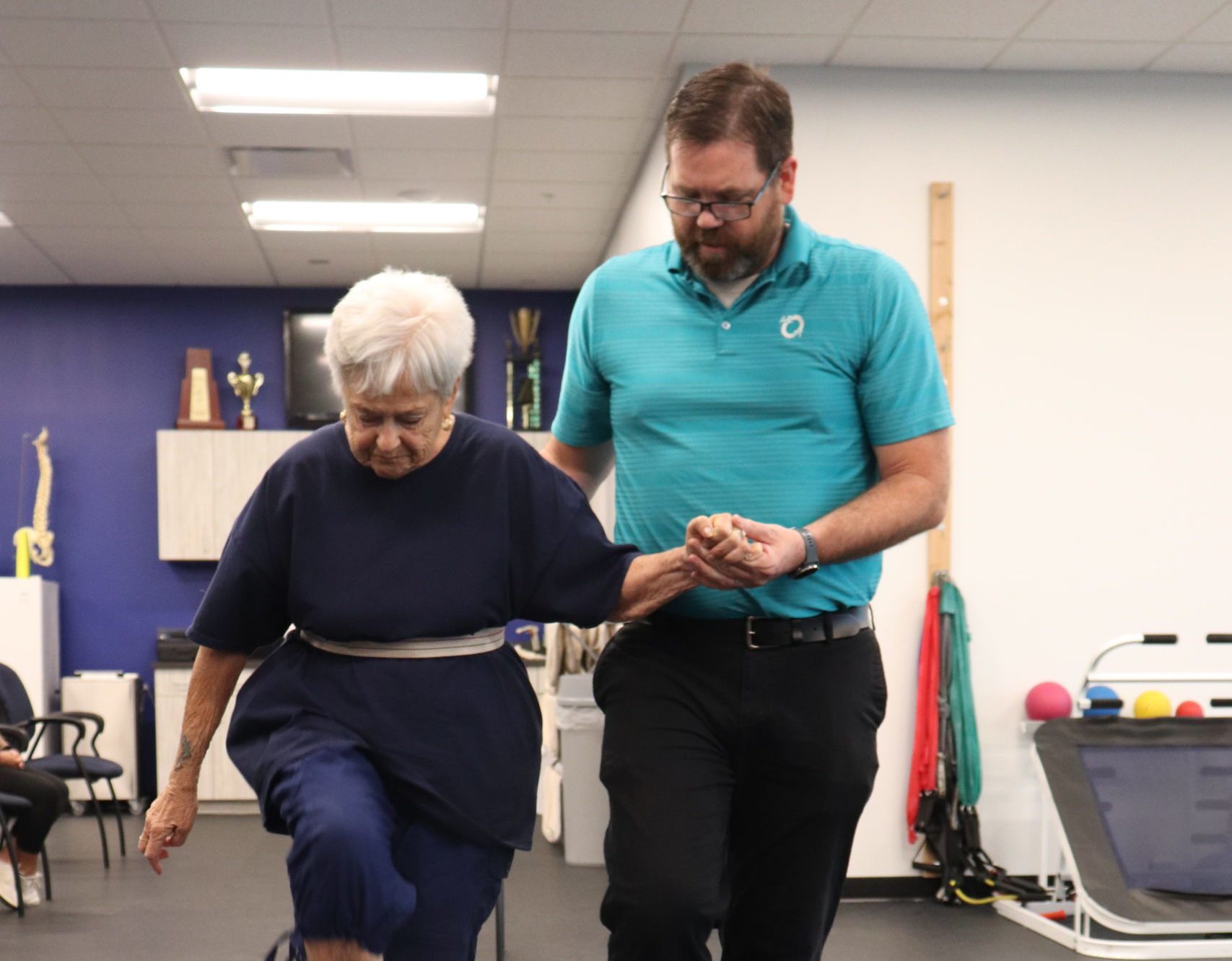The Vestibular System and Balance
Balance is a complex interaction of systems. It has both internal (inside our bodies) and external components (outside). These components work together in healthy individuals to maintain or regain balance. These components also know which way is up, what direction and how fast you are moving and can make posture adjustments to catch you if you are lose your balance or walk on uneven surfaces.
One of these components is the vestibular system.
The vestibular system is about the size of your thumbnail and is located on the inside of each of your ears. It includes the parts of the inner ear and brain that process the sensory information involved with controlling balance and eye movements. Sensory information is provided for motion, equilibrium, and spatial orientation by the utricle, saccule, and three semicircular canals. The utricle and saccule detect gravity, vertical orientation, and linear movement. The three semicircular canals detect rotational movement and are filled with a fluid called endolymph. They are oriented in the three planes. So when we move, the vestibular system helps us know where we are in space and how to maintain our position in it.
When we’re having a problem with the vestibular system, we notice abnormal symptoms. Dizziness is the most common. Dizziness is abnormal and not a normal part of aging.
Vertigo is the illusion of movement, a specific sensation of spinning or feeling the room is spinning. Presyncope is the perception that one is going to faint. Syncope is fainting. Disequilibruim is the sensation of losing ones’ balance without vertigo or presycope. Nonspecific lightheadedness is a vague sensation not characterized by the other three categories.
BPPV stands for Benign Paroxysmal Positional Vertigo which is when the otoconia (or rocks, marbles, crystals) come out of the utrical, causing nystagmus, an involuntary movement of eyes and the illusion of movement or sensation of spinning. This usually happens with changes in head position and typically lasts less than one minute.
BPPV can typically be treated in 1-3 visits with a licensed physical therapist. The treatment involves specific movements of the head, called canalith repositioning maneuver, which is also referred to as the Epley maneuver. This procedure helps put those crystals back in place. This treatment corrects BPPV in more than 90% of cases.
Vestibular Hypofunction is when the vestibular system is not working properly, injured, effected by disease or “weakness” that some refer to as hypofunction. This is usually described more as disequilibrium, which is the sensation of losing ones’ balance without vertigo or presycope and can cause unsteadiness with standing or walking. When you have vestibular hypofunction, you can work on it like you would a weak muscle.
Vestibular Rehabilitation Therapy (VRT) is physical therapy for vestibular disorders including vestibular hypofunction. Physical therapists are specially trained to provide specific exercises that retrain the brain to recognize and process signals from the vestibular system. It is not like traditional physical therapy. VRT is most effective when practiced regularly. Home-based exercise will be assigned by your physical therapist to help you continue your vestibular rehabilitation therapy at home. These will be individually prescribed based on your symptoms and goals.
Treatment for vestibular disorders will vary greatly from person to person and depends on the type and severity of your diagnosis and symptoms. Balance is complex interaction of 4 major systems and maintaining balance depends on information received by the brain from the eyes, muscles and joints, and vestibular system. Disruption of just one of these internal factors can lead to balance problems and a higher risk of falling. There are things we can do to prevent or reduce our risk of falling. Balance requires practice to regain or maintain.
Balance is a skill that can be improved with exercise!







